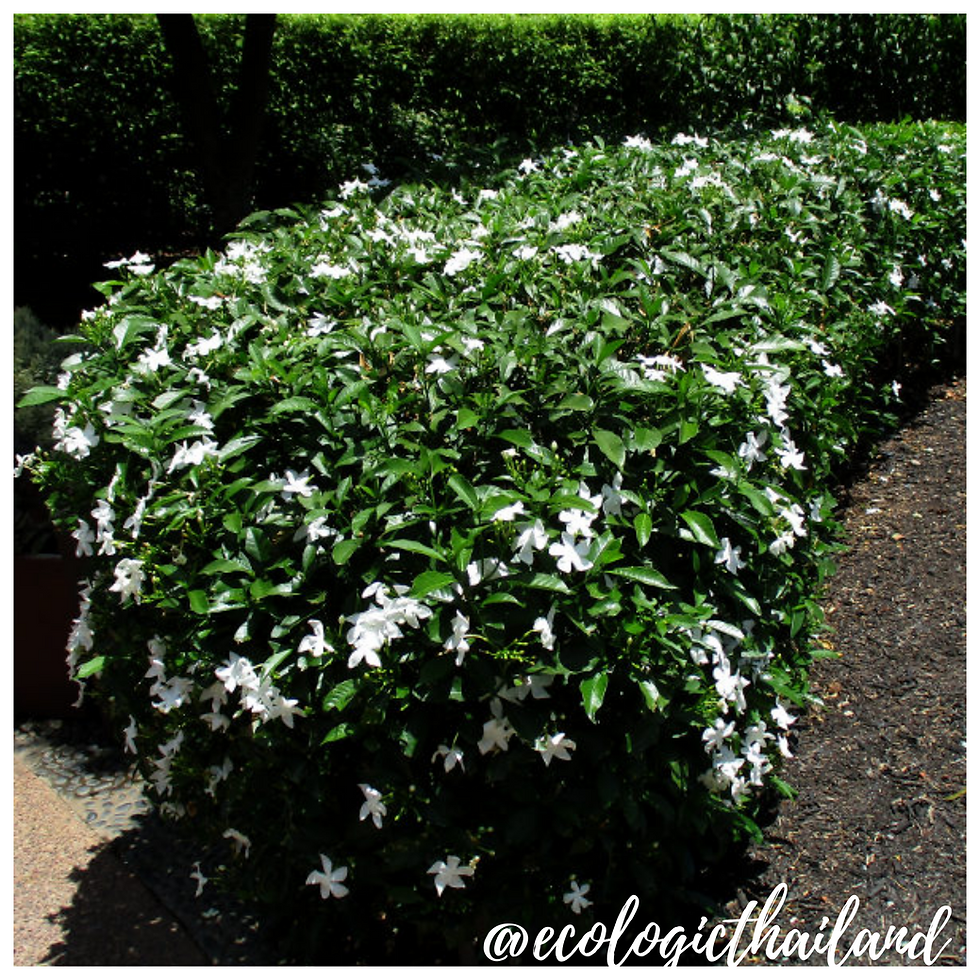Sweet Basil
- Eco-Logic Resort
- Sep 23, 2020
- 3 min read
Updated: Sep 29, 2020
Horapa | กะ-เพฺรา | Ocimum basilicum
Family: Lamiaceae - Genus: Ocimum

Sweet Basil can be found near the vegetable gardens of the Thai Child Development Foundation and around the kitchen area of Eco-Logic Thailand on Mount Never-rest.
Basil is native to tropical regions from central Africa to Southeast Asia. It is a tender plant, mainly used for cooking. There are many varieties of basil, the most commonly used called sweet basil. Not to be confused with Thai Holy basil or Lemon basil.
Sweet basil is grown for the leaves, the flower(buds) and seeds, which are all edible.
Sweet Basil is ready for harvest 50 to 60 days after planting. Regular harvest will keep plants growing strong.

THE SWEET BASIL PLANT
Basil is an annual herb used for its leaves. Depending on the variety, plants can reach between 30 centimeter and 150 centimeter.
.

SWEET BASIL LEAVES
Its leaves are richly green and ovate, but otherwise come in a wide variety of sizes and shapes depending on cultivar. Leaf sizes range from 3 cm (1.2 in) to 11 cm (4.3 in) long, and between 1 cm (0.39 in) and 6 cm (2.4 in) wide. Basil grows a thick, central taproot

SWEET BASIL FLOWERS
Its flowers are small and white, and grow from a central inflorescence that emerges from the central stem atop the plant. The flower buds can be eaten and have a more subtle flavor.

SWEET BASIL SEEDS
When soaked in water, the seeds of several basil varieties become gelatinous, and are used in Asian drinks and desserts
CULINARY USES OF SWEET BASIL
Basil is most commonly used fresh in recipes. In general, it is added at the last moment, as cooking quickly destroys the flavor. The fresh herb can be kept for a short time in plastic bags in the refrigerator, or for a longer period in the freezer, after being blanched quickly in boiling water.
The leaves are not the only part of basil used in culinary applications, the flower buds have a more subtle flavor and they are edible.
The basil flowers can also be used to make basil flower oil or tea.
At Eco-Logic's restaurant we use basil (amongst other dishes) to make Thai style pesto. Click on the logo of the restaurant to find the recipe.
NUTRITION
Basil is virtually calorie-free and, in addition to antioxidant vitamins and phenolics, is a rich source of vitamin K, zinc, calcium, magnesium, potassium and dietary fiber.
TRADITIONAL MEDICINAL USE OF SWEET BASIL
NOTE: please take advice from a doctor if you are planning to use herbal medicine.
Sweet Baisil is said to be an anti-bacterial, that can it also relieves constipation and indigestion as well as cold symptoms. It can also helps reduce body fat.
SWEET BASIL SEEDS:
Research studies of the essential oil showed antifungal and insect-repelling properties, including potential toxicity to mosquitos.
Sweet basil seeds have gained a reputation of a weight loss-friendly food for helping shed off those kilos. Sweet basil seeds help reduce body heat, control blood sugar levels, relieve constipation and bloating, and treat acidity and heartburn.
The seeds are also known to be great for your skin and hair. They are rich in antioxidants and have immunity-boosting properties.
INTO THE WILD: a down to earth experience

For guests and visitors to Paksong we organize weekly tours "The Edible Forest" and Foraging weekends: Into the Wild. We work with local guides to take you in the jungle of Paksong. After foraging, we will cook a meal with the ingredients, using bamboo together with you!
Come and join and learn about the abundance of food that nature gives us!
INTO THE WILD!


















Comments